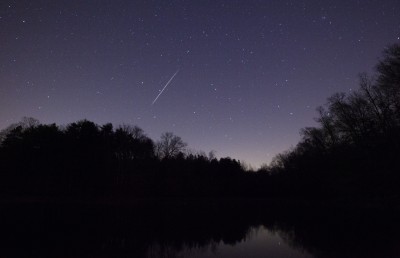The Lyrids Meteor Shower
April 21 and April 22
There is something magical about a shooting star that seems to quicken the pulse and fill you with a sense of wonder. Unfortunately, in order to actually see them you have to be up at night. You might be surprised how memorable it is for kids (even teenagers) to lay under the heavens watching for the first telltale trace of a shooting star streaking across the sky.
There are several meteor showers across the year that put on a reliable show of falling stars streaking across the sky. The Lyrids is one that occurs in April. This meteor shower was first observed in 687BC by the Chinese historian Zuo Zhuan who reported that “at midnight, stars dropped down like rain.” The meteor shower results from dust particles shed by the comet Thatcher as they enter the atmosphere when the Earth passes through the comet’s tail. You can expect to see about 10-20 meteors per hour at their peak. On a good year, there can be as many as 100 per hour, which is why it is one of the major meteor showers. This year the moon will be in the sky for part of the night so the best time to catch the show is after moonset (3:53 AM) and before dawn (6:04 AM) the morning of April 22. (Yes, that means getting up in the middle of the night. They are SHOOTING STARS for God’s sake! It’s worth a little missed sleep.)
Find a place away from city lights (which may require driving). Dress warm (it is cold in the hours before dawn). Bring blankets and hot chocolate. Ignore the grousing by the kids.
And, of course, there must be wishing that occurs on the first shooting star seen by each person.

